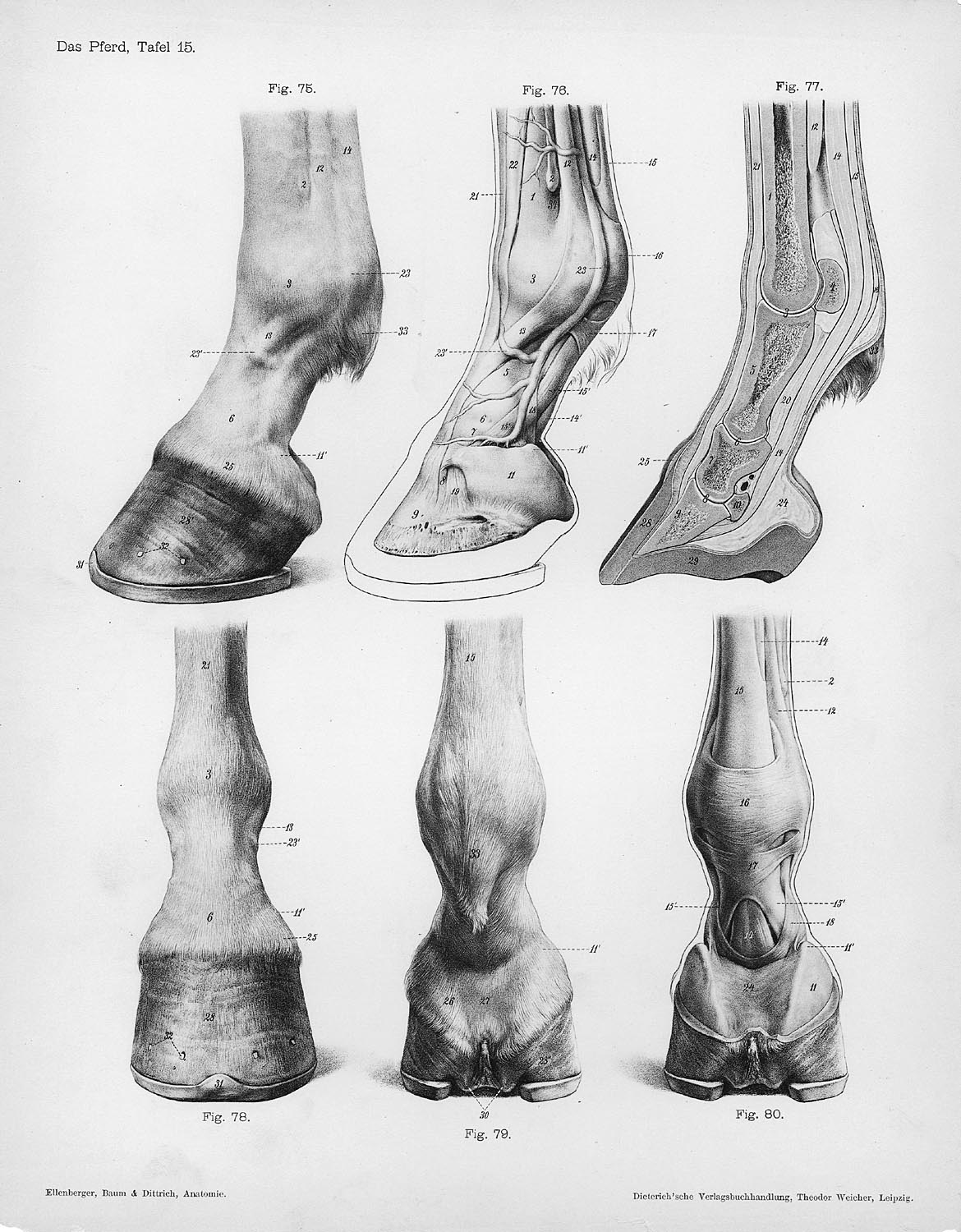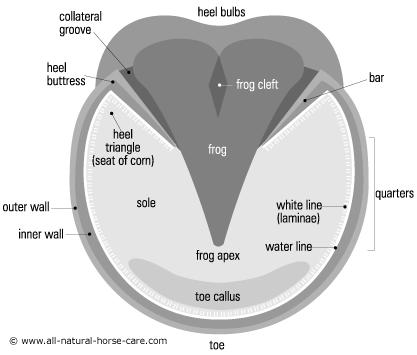A good farrier is hard to come by, but worth their weight in gold.
Not sure if your farrier is a good farrier? Here's some things to consider:
-Does he know things about your horse such as what discipline he is, level of training and conformational defaults?
-When you ask a question, does he give a straightforward answer? When you don't understand, does he try to help you understand the concept?
-What do others in the competitive horse community think of him? (I emphasize competitive because many hoof issues lay dormant in limited work).
Of course, knowing those things means you must open a channel of communication with your farrier. As I've said before, a good farrier doesn't mind you asking questions.
Let's say you have opened up a dialogue with your farrier and you notice your horse isn't being trimmed or shod properly. What is your next course of action?
1. Let the farrier know your concerns. Hear him out. He may have a plausible explanation. Make sure you take notes.
2. Ask him to meet with your vet and your trainer to get professionals working on the case. Remember, you're a layperson. You don't know everything, and you telling him he is doing something wrong is likely not going to go over well. If he is working professional to professional that is going to make change more likely. If you can't get them to meet, tell him what your vet has said and his or her recommendations. Tell him that you respect his opinion, but you were thinking what the vet said is valid and perhaps he could incorporate it into his trimming/shoeing routine. Keep in mind that some farriers are very anti-vet for a reason. Many vets do not have the correct understanding of hoof anatomy, and so many farriers don't often want to hear them out.
3. After your concerns, make sure you talk to him before the next trimming/shoeing. Will he do anything different? If so, why? How will it affect my horse?
4. After your farrier leaves, inspect the hooves. Take pictures and compare. If there is improvement, good (don't go on to step 5). If not, I suggest getting a new farrier (see step 5).
5. In the horse world, your reputation is as good as what other people say about you. The last thing you want to do is really anger the professionals in your community. Trust me: they will talk about you if you don't pay your bills on time, are flaky on business deals or are just bad to do business with. If a professional is not doing an adequate job, you have a responsibility to let him or her go. Call up your farrier, and tell him why he is not working. Of course, don't be a snot about it. Just say something like, "I feel like the changes we talked about weren't realized when you came out the other day. I've seen your work, I know you're a good farrier, but I'm afraid at this point in time I made need a specialist."
That brings us to the next point. How does one find a good farrier? Often, using a variety of indicators can help you narrow down the field.
-www.theamericanfarriers.com has a great listing of certified farriers. Some of them are mediocre, some of them are great. But it is a great start. However, sometimes awesome farriers aren't certified through this association -- so using this resource alone may not be the best choice.
-Call your state vet office. Who do they recommend in your region? Who do they give cases to?
-Ask around at competitive barns (again, I emphasize competitive because weekend trail riding horses often show no signs of lameness despite incorrect trims due to their limited work). Who do they recommend and why?
When you narrow the field to three to five farriers, start making phone calls. You want to know if they come out to your area, or if you need to haul over to them. Ask what their areas of expertise is and what discipline they general trim/shoe for. Ask for references. Treat this phone call like a job interview.
This is also a critical time to let the farrier know that he is expected talk to you about your horse's health and he is expected to keep an open dialogue with your vet and other equine professionals. But always let him know that you respect his experience first and foremost.
Now, let's talk about how to keep a farrier.
Whenever I get a new farrier, I make an "investment" into him, especially if he is just coming out for my horse. On the first evaluation or first trimming, I'll usually give a $15-20 tip. During the first time I meet him, I'll ask him about himself and his family. Take note of what he likes to drink (if you see a Starbuck's container, ask him what his favorite drink is). Does he have kids? How old? What kind of horses does he own and what does he do with them?
Usually by the next trimming, I'll bring him his favorite drink. I had one farrier who couldn't get enough of Mello Yello (not Mountain Dew). Considering I was usually his last job for the day, he probably always was happy to see me and that Mello Yello.
Another farrier of mine loved Starbucks. I've never seen an ex-Marine, cowboy-type love frilly-froo-froo coffee as much as him. I'd bring him a Chai tea from time to time, and would give him gift cards for Christmas or other occasions. It even became a joke between us.
I've even had a farrier work on a training issue that I could have likely done myself. A horse was having problems loading, and while he was trimming I was bemoaning some of my troubles. I saw him puff up and say, "I bet I could get that horse to load." I told him, "I'd pay you $10 if you can get that horse to load in 10 minutes."
After he was finished, he set to work. He had the horse loaded in 15 minutes, and I gave him a $25 tip.
You are really going to have to get to know your farrier and know what he likes (some farriers would hate it if I ever asked them to "train" my horse).
So why should you invest in your farrier? Because when your horse pulls a shoe, gets an abcess or something goes wrong in between trims, he will be more likely to put other things aside for you. You are, afterall, a good customer.
That brings me to a final point about keeping your good farrier (and getting him to call you back): BE A GOOD CUSTOMER. That means paying when services are rendered and respecting his professionalism and professional opinion.
Also, many farriers have bad backs (I haven't met one without back problems, ever). Please make sure your horse is trained to have its hooves handled. It is one thing for a farrier to deal with a horse in pain, but it is quite another for him to deal with an untrained, difficult horse.
Because hoofwork in an art, not a science, farriers often take their work very personally. I have yet to meet a farrier who was ambivalent about his work or his job. With so many emotions invested, you have the opportunity to really create a great relationship or create a volatile relationship.























